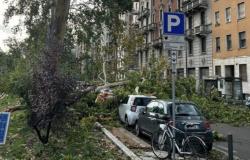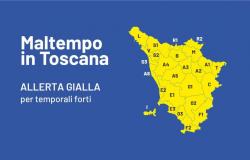
TRENT. A ticket to visit the DolomitesThe Venice model transferred to altitude. A hypothesis put on the table by him hoteliers in the Belluno area. A functional ticket to manage inflows and to finance mobility, promotion and events to enhance the territory. Skepticism in Trentino on the city tax lowered on the mountains.
After the launch of the ticket in Venice, a hypothesis in this direction was put on the table in recent weeks by Reinhold Messner. But on the passes of the Dolomite arch this proposal was received with a certain coldness.
“An outdated idea also because the daily passage cannot be predicted. The passage of buses is also now reduced. In general, tourism has changed“, the words a the Dolomites Of Osvaldo Finazzertoinnkeeper and president of the Committee for the protection of the Dolomite passes. “The problem of traffic and pollution on the Dolomite passes is evidently exaggerated and action must be taken on the valley floor. Most of the critical issues could be resolved if controls were intensified and if, as we have been asking for years, a cycle path of the Sellaronda, which would have international resonance and scope” (Article here).
The Belluno operators hypothesized the ticket during the last national assembly of Federalberghi. An advantage is that hoteliers would no longer be the only ones having to collect the tourist tax. The resourcesabove all, they would be intended to develop and strengthen the tourism sector and services.
Little or nothing, the reflection of the hoteliers, has been done to safeguard the steps, long-term projects are lacking, also for parking or mobility. The facilities open in the summer are not enough to manage mobility and the risk is that transit will close within 20 years.
L’overtorusim in general it is worrying and many destinations are busy evaluating the repercussions of an excessive influx of visitors, in particular ‘hit and run’, and are reflecting on the possibilities of managing the flows (Article here). But the city tax does not seem to receive particular favors in Trentino.
“The city tax is not a topic that has been addressed recently but there are still doubts about the application of this measure”, he comments Davide Cardella, director of Asat, trade association that carries out the role of Federalberghi in Trentino. “There are more disadvantages than benefits. It is not a solution and can lead to more problems, even at a communication level.”
The city of Venice has rather defined borders and accesses, while the steps by definitions represent a connection between territories, in many cases also different from an administrative point of view with the transition from Regions with ordinary statute to Provinces or autonomous Regions. “This is the first difficulty in finding a synthesis”, highlights Cardella. “Furthermore, the area is too large and management does not appear so simple. A few euros do not discourage the arrival of ‘hit and run’ visitors but rather risks creating an image of an elitist destination.”
The introduction of City tax it had been a sensitive topic in Trentino. But it has changed practically nothing on the dynamics of arrivals and presences, rather it has generated important resources that support the system in times of increasingly tight budgets, even for an autonomous Province. So much so that a couple of years ago this instrument was standardized throughout the territory and slightly revised upwards (Article here).
“Almost everywhere in Italy the tourist tax is collected by the Municipalities which then uses the resources for various interventions, not strictly connected to the tourism sector”, adds the director of Asat. “In Trentino, for example, we have a specific law and almost all of the income goes towards Tourism companies and at Territorial agencies to strengthen and develop ad hoc projects and services”.
Despite the clarity of the objectives, the direction, for Asat, is different. “The carrying capacity of a destination must be addressed, the territory must be respected. However, it is always risky to talk about closed numbers. Our policy is based on a logic of distribution and flow management: deseasonalization, but also investment in those markets that are attractive for holidays in autumn and spring”, concludes Cardella.





